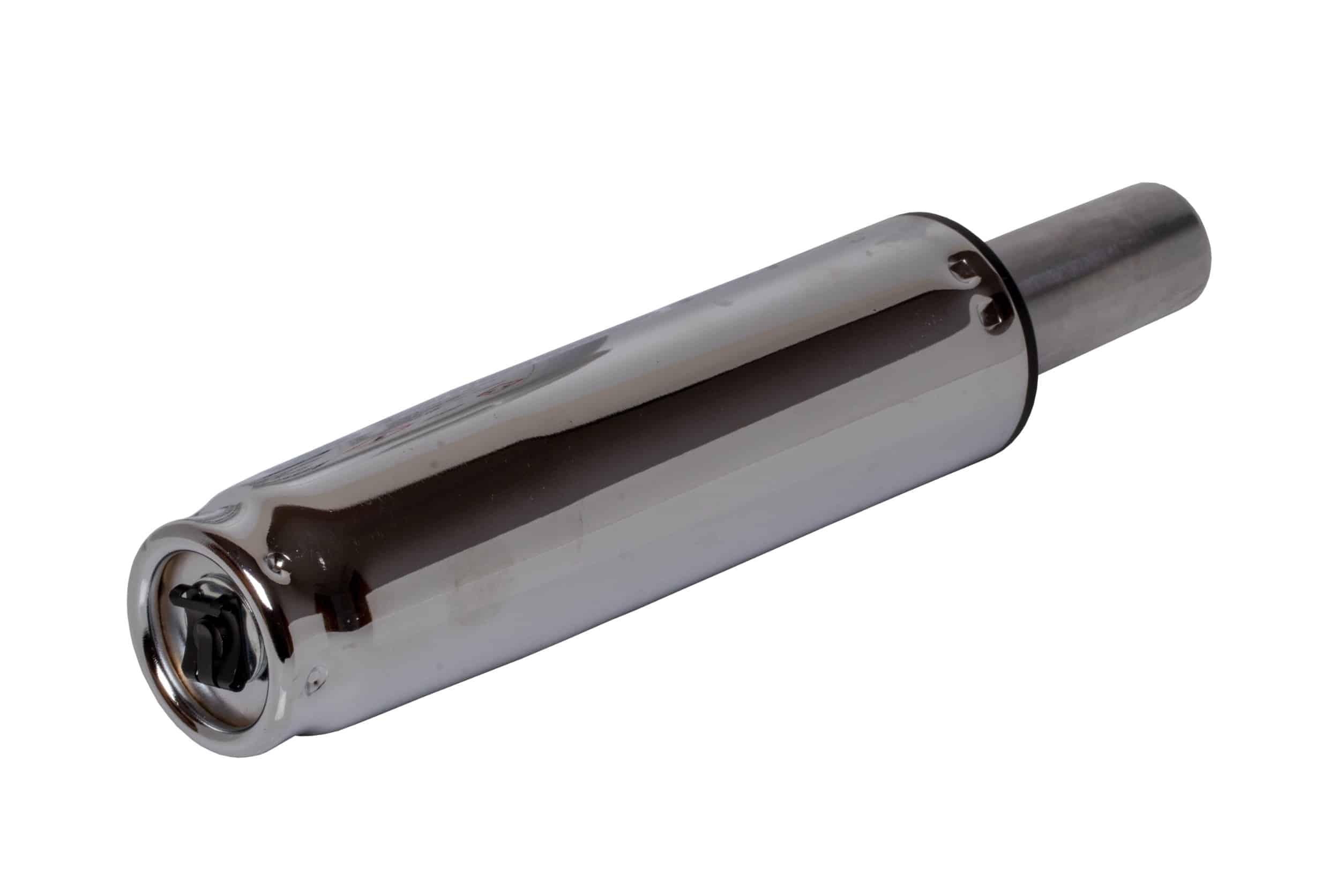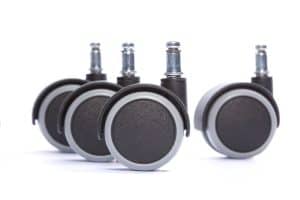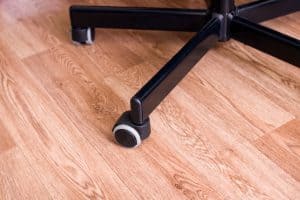Chair cylinder mechanisms allow us to adjust the height of our chair seats. Unfortunately, they also break down very easily. Most of us will have to deal with a broken office chair sooner or later. When this happens, you might think of sending it for repair or getting a new one.
However, what most people don’t know is that you just might be able to solve your problem within minutes simply by learning how this simple mechanism works.
This is why in today’s post, we’ll give you an overlook of the height adjustment mechanisms utilized in most chairs and explain how to change your chair’s cylinder. In addition, we’ll also describe the healthiest height setting and how to set your chair height accordingly.
First, let’s start by explaining what type of chair cylinders there are and what you should look out for in terms of size.

How to Remove Chair Cylinder: Hydraulic vs Pneumatic
First of all, let’s start by saying that not all office chair cylinders are the same. There are two types of cylinders, and these are pneumatic and hydraulic cylinders. They are almost exactly the same except for a few simple nuances.
A pneumatic cylinder, also called a gas lift, is a contraption that features metal cylinders and an air chamber. The mechanism utilizes compressed air to lift or lower the chair, and the principle is very simple.
Inside a pneumatic cylinder is an air chamber. When you sit on the chair, the air that’s trapped inside the chamber is compressed. When you pull the lever, the compressed air gets released and expands into its original size, allowing the mechanism to extend higher.
A hydraulic cylinder, on the other hand, works a little differently. It utilizes compressed liquids instead of gas. The liquid in question is usually a type of machine oil, and the chamber compresses the liquid instead of the gas when pressure is applied. As opposed to a pneumatic cylinder, a hydraulic cylinder has two chambers separated by a piston that extends and retracts.
Are Gas Office Chair Cylinders Universal?
Almost all of the gas cylinders you’ll find on the market are universal in width. This means that any gas cylinder you’ll find will suit your chair. The common width measurement of a chair cylinder is usually about 5 cm (2 inches), but occasionally, albeit very rare, you may come across models with 4 or 6-inch cylinders as well.
If your chair’s lift is broken and needs replacing, a 2-inch cylinder will probably work. You can also look for one that says “universal” in the product description.
However, let’s get one thing clear: “universal” doesn’t mean that all universal cylinders are exactly the same size. Even if the diameter of the cylinder is the same, you should pay attention to the height range.
Chair cylinders come in a variety of different height options. Cheaper options may offer a range of 10-15 cm (4-6 inches), which is sufficient if you’re average in height.
However, we advise exercising extra caution when shopping for a cylinder, as most listings online only indicate the total height of the cylinder instead of the range. Looking for the term “adjustable height” or “adjustable height range” can help you find the exact model that’ll fit your needs.
Now that we know what type of cylinders there are and whether their size matters or not, let’s move on to how you can remove and replace one with ease.
How to Remove Office Chair Cylinder
If your chair is sinking by itself, or if the height adjustment lever doesn’t work, it may be time to replace your chair’s cylinder. Of course, you can also check out our article on how to raise a chair without a lever to make sure that your chair absolutely needs a cylinder replacement.
If your chair cylinder is broken, or if it doesn’t rise as high as you want it to, however, you can change it in mere minutes. It may sound difficult, but it’s actually very simple if you know what you’re doing and have the right tools.
Here are the essential tools you’ll need when changing your chair’s cylinder:
- A replacement cylinder or lift
- A hammer or a rubber mallet,
- A screwdriver, and
- A pipe wrench.
Now, assuming you have all the tools you need, you’re ready to tackle the problem. Let’s look at how you can remove and change the gas or hydraulic piston of your chair in a few easy steps.
How to Remove Gas Piston From Office Chair
The hardest part of replacing an office chair cylinder is removing the cylinder from the chair top. To do this, you first need to put the chair upside down or lay it on its side.
Putting the chair upside down will ensure that no accidents will happen. As we’ve explained above, the cylinder is designed to be pressurized by the seat’s weight. Even in a neutral position, the cylinder is under a bit of stress, which may cause it to extend suddenly as you’re replacing it.
With the chair upside down, strike the base of the chair with the rubber mallet or a hammer carefully to loosen it from the cylinder and the chair top. Once it’s loose, carefully remove it and set it aside.
Now it’s time to remove the cylinder from the rest of the chair. To do this, secure the piper wrench around the cylinder as close as possible to the side that’s attached to the chair top. Using a twisting and pulling motion, get the cylinder loose enough to separate it from the chair.
How to Remove Hydraulic Cylinder From Chair
Even if hydraulic and pneumatic cylinders work differently in principle, the method for replacing them is almost the same.
As we explained above, you first need to loosen the cylinder from the chair base using a rubber mallet or a hammer. If you’re having trouble at this stage, you can try alternating between tapping the mallet horizontally and vertically, which should help loosen it up.
Upon removing the base, you’ll again need to use the pipe wrench to loosen up the cylinder from the chair top. If you’re having trouble at this stage, you can use a screwdriver to make the process much easier. All you need to do is locate the four screws that attach the body of the chair to the legs, which are located right under the seat.
Once you get these screws out, removing the cylinder should be a piece of cake. Don’t forget to place the screws in a secure place and put them all back once you’re done. After removing the cylinder, simply place your new cylinder and follow the steps in reverse.
How to Set Your Chair to Your Body Height
Now that you know how to remove and change your chair’s cylinder, you finally get to enjoy a height-adjustable chair again. If you want to prevent back pain and posture problems in the long run, you should adjust the height of your chair to your own height. Once you do that, adjust desk height as well.
If you want to learn how to adjust the height of your desk to your liking, check out our post on raising your desk. For now, let’s take a look at how you can set your chair t so that you can sit more comfortably.
- Sit in an upright position with your hips pushed all the way back so that you’re resting against the backrest,
- Bend your knees so that they’re at a 90-degree angle,
- Hold your feet parallel to the ground, and
- Adjust the height of the seat until your feet are firmly on the ground without breaking the 90-degree knee angle.
Conclusion
In today’s post, we explained everything you need to know about office chair cylinders and how to easily replace them. As we close out our post, let’s recap everything we’ve covered.
As explained above, there are mainly two types of office chair cylinders. While pneumatic chair cylinders utilize pressurized gas, hydraulic ones utilize liquids to lift the chair. Even if the mechanisms work in slightly different ways, changing them takes pretty much the same amount of effort.
As long as you have a hammer and a pipe wrench, loosening the cylinder from the base is pretty simple. To separate the cylinder from the seat, you may need a screwdriver.
All in all, height adjustment is an important component of an ergonomically designed office chair. If you don’t want to deal with the hassle of changing cylinders, you can check out our ergonomic chair buying guide.





